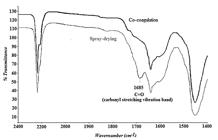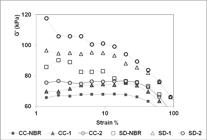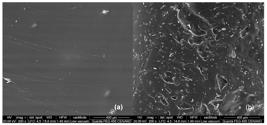Abstract
Silica was extracted from rice husk ash (RHA) by a sequence of reactions to produce nanosilica. Two laboratory routes, co-coagulation and spray drying, were used to incorporate the nanosilica into the rubber matrix. Samples were characterized regarding filler incorporation efficiency, thermal stability, rheological behavior and morphology. Thermogravimetric analysis showed that spray-drying was the most efficient filler incorporation process and also the presence of silica increased the thermal resistance of the rubber compound when compared to the unfilled rubber. The rheological behavior showed that NBR filled with silica presented higher elastic torque (S’), storage modulus (G’) and complex viscosity (η*) than unfilled rubber. The Payne effect was also observed for the composites produced by spray-drying. In addition, the thermal behavior and Payne effect results were supported by the comparison of morphology observed by FEG-SEM analysis.
Keywords:
co-coagulation; latex; silica; spray-drying

 Thumbnail
Thumbnail
 Thumbnail
Thumbnail
 Thumbnail
Thumbnail
 Thumbnail
Thumbnail
 Thumbnail
Thumbnail
 Thumbnail
Thumbnail
 Thumbnail
Thumbnail






